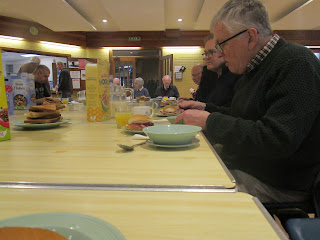In view of subsequent events, TBYML did seem a bit like PJH's audition for the job of Nick Cave's girlfriend, and many commentators were keen to draw the comparison at the time. But though it and the output of the Bad Seeds at the time seem to share an imaginative universe, they aren't very close together in it. If we think of TBYML as pastiche Americana, we are reading into it settings that aren't there, as its lyrics are marked by distinct unspecificity; and, with the possible exception of 'Working For the Man', Harvey sings for women characters, while the women on Cave's records are usually the victims of the characters he voices. And it was a good dozen years after the album was released that the maestra told Gary Crowley on BBC Radio London about a much more important consideration in her mind at the time, the writing of Flannery O'Connor. In 2020 she posted a picture on Instagram showing her with a copy of O'Connor's Wise Blood, taken, she said, around the time TBYML was being composed - though more recently she told Rolling Stone that she was already reading the American's work in her late teens (I'm not sure she isn't misremembering that, she is not always careful about dates).
Flannery O'Connor was an artist thought little of for many years, who seems to have ascended to general acclaim just at the point that aspects of her work - and, even more, her person, if the two can be separated - start to become unacceptable to those who decide what to celebrate and what to denigrate, aspects which shouldn't really be news. O'Connor was only 39 when she died in 1964 of systemic lupus, the same disabling disease that killed her father - a sardonic, thoughtful writer of morality tales with a taste for the violent, her attitudes drawn deep from Catholic Christianity, and yet an author who refused to proselytise, instead depicting her characters engaged almost unawares in the battle for goodness and transcendence the Faith outlined; and one who also resisted any attempt to locate good and evil in simple, obvious places. O'Connor's is a fallen world penetrated with grace.
Harvey says that O'Connor's work taught her about storytelling: it 'was also shaping the way that my third-person narrative was becoming in the whole record'. Now, the curious thing about this is that, like most of her music, TBYML's songs don't embody stories. It's only really on her subsequent record, 1998's Is This Desire?, that she turns to such structures, and some of the tracks on that record do have specific lift-off points in tales by O'Connor. The protagonists of TBYML give you glimpses into their history - the obsessive of the title track who was born in the desert and has crossed wasted landscapes to meet the listener, the murderous mother of 'Down By the Water', 'The Dancer's' desperate abandoned lover on her deathbed. But each is speaking from a single moment, rather than laying out a narrative as Nick Cave's characters from around the same time do.
If Flannery O'Connor has sketched the landscape TBYML inhabits, what it takes from her writing isn't the third-person device which Harvey doesn't adopt until a few years later; and, while you can see the same interests in both artists, Harvey's music dealt with religion, violence, and extremity right from the start. Instead, what O'Connor seems to have provided her with is the permission to bolt them all together, to imagine characters whose lives move around religion and sometimes lead them in violent directions. And, as always, Harvey's imagination takes her deeper and wilder than virtually anyone else.



















